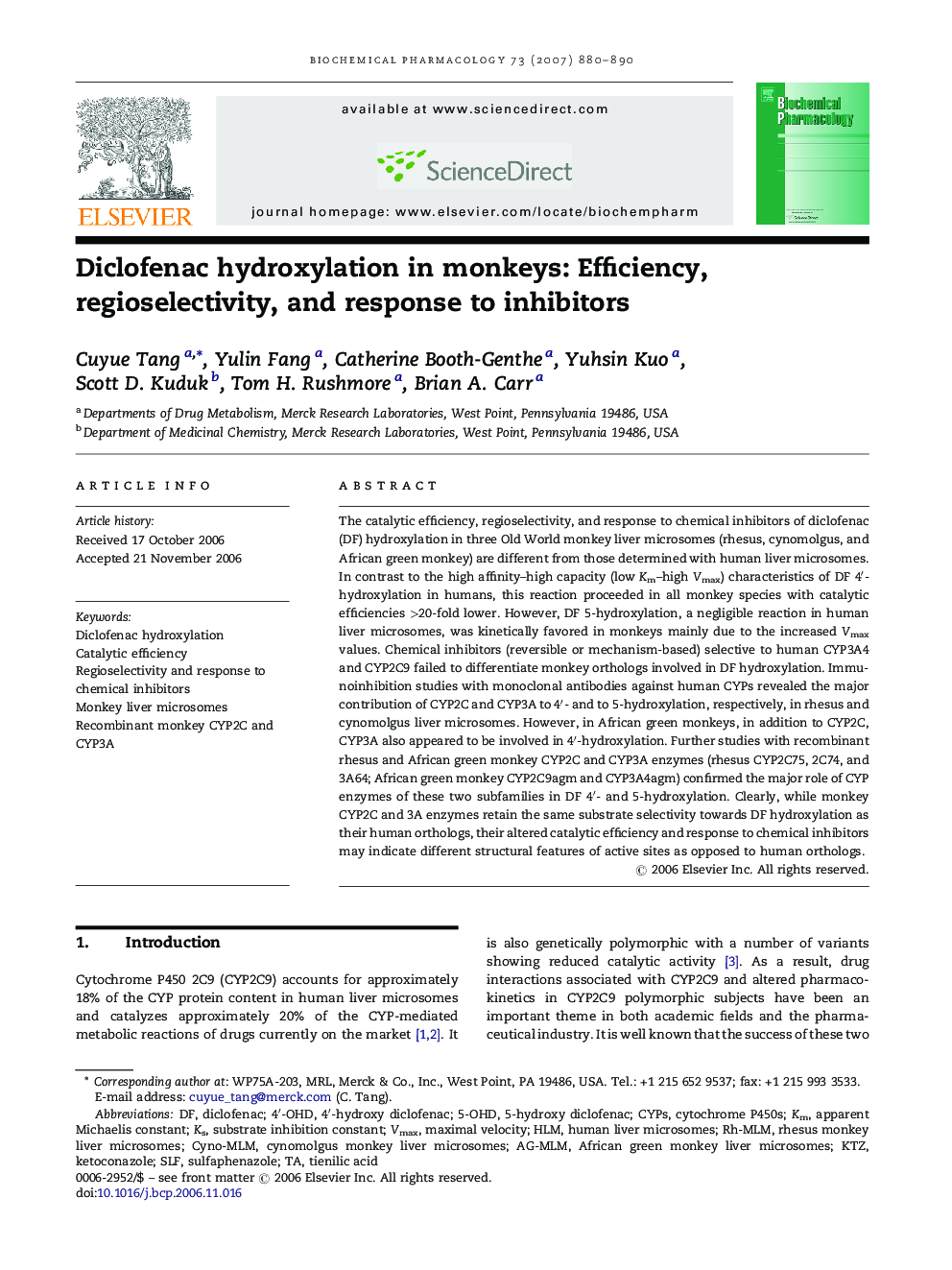| Article ID | Journal | Published Year | Pages | File Type |
|---|---|---|---|---|
| 2515066 | Biochemical Pharmacology | 2007 | 11 Pages |
The catalytic efficiency, regioselectivity, and response to chemical inhibitors of diclofenac (DF) hydroxylation in three Old World monkey liver microsomes (rhesus, cynomolgus, and African green monkey) are different from those determined with human liver microsomes. In contrast to the high affinity–high capacity (low Km–high Vmax) characteristics of DF 4′-hydroxylation in humans, this reaction proceeded in all monkey species with catalytic efficiencies >20-fold lower. However, DF 5-hydroxylation, a negligible reaction in human liver microsomes, was kinetically favored in monkeys mainly due to the increased Vmax values. Chemical inhibitors (reversible or mechanism-based) selective to human CYP3A4 and CYP2C9 failed to differentiate monkey orthologs involved in DF hydroxylation. Immunoinhibition studies with monoclonal antibodies against human CYPs revealed the major contribution of CYP2C and CYP3A to 4′- and to 5-hydroxylation, respectively, in rhesus and cynomolgus liver microsomes. However, in African green monkeys, in addition to CYP2C, CYP3A also appeared to be involved in 4′-hydroxylation. Further studies with recombinant rhesus and African green monkey CYP2C and CYP3A enzymes (rhesus CYP2C75, 2C74, and 3A64; African green monkey CYP2C9agm and CYP3A4agm) confirmed the major role of CYP enzymes of these two subfamilies in DF 4′- and 5-hydroxylation. Clearly, while monkey CYP2C and 3A enzymes retain the same substrate selectivity towards DF hydroxylation as their human orthologs, their altered catalytic efficiency and response to chemical inhibitors may indicate different structural features of active sites as opposed to human orthologs.
